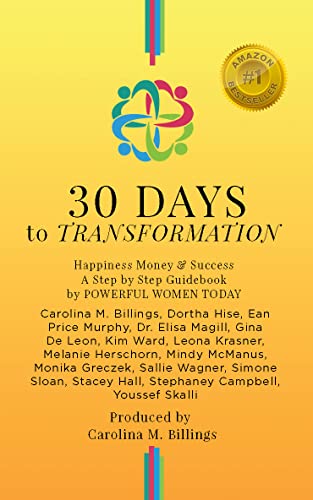A Harvard MBA who was an officer of a large national company was brilliant but had zero confidence. She liked to project toughness in the office while also micromanaging her team. One year the company’s financial results were not stellar. A colleague found her on hands and knees in the parking lot, crying over the bad reports. She was so afraid of losing her position. Her team labored to produce a presentation that met her demands. From 8:30 at night until2:30 in the morning, she directed her team to tweak the results to present a better picture and bring updates back to her while she waited…in the bar.
Now, as an officer of the company, she could do no wrong at that time. Remember, she wanted to be seen as tough as nails. When an icy snowstorm hit, a colleague offered to give her a ride home. She was so afraid of the slick road conditions; she cried in the car. When it was over, she made her colleague swear never to tell anyone.
I am sure we can all raise our hand to share an experience working with a “toxic rockstar”—a colleague or boss–who displayed any of the following: Perfectionism, micromanaging, bullying, harassment, temper tantrums, taking all the creditor failing to communicate effectively. What a fun way to get through your work week.
We know that high performers come in all shapes, sizes, and colors. They make companies look good, driving results, achieving goals, and delivering wins. But sadly, as you all know and have shown, toxic rockstars blow torch their way to success. Companies find it difficult to deal with these bad actors because, yes, they are “killin’ it.” But they are also killing their team in the process.
Severe Culture Dysfunction is Costly
 Toxic cultures, according to SHRM, is ahigh cost to organizations. The cost to U.S. companies is almost $50 billion per year and were the single biggest predictor of attrition during the first six months of the Great Resignation, according to MIT Sloan, Why Every Leader Needs to Worry About Toxic Culture, March2022.The impact of toxic rockstars on black, indigenous, and people of color (BIPOC)–a highly desirable, highly talented cohort we would all like to attract—cannot be ignored. We find ourselves in a continuing battle to find, hire, and retain talent. InSeptember2022, job openings totaled 10.7 million, according to Bureau of Labor Statistics.
Toxic cultures, according to SHRM, is ahigh cost to organizations. The cost to U.S. companies is almost $50 billion per year and were the single biggest predictor of attrition during the first six months of the Great Resignation, according to MIT Sloan, Why Every Leader Needs to Worry About Toxic Culture, March2022.The impact of toxic rockstars on black, indigenous, and people of color (BIPOC)–a highly desirable, highly talented cohort we would all like to attract—cannot be ignored. We find ourselves in a continuing battle to find, hire, and retain talent. InSeptember2022, job openings totaled 10.7 million, according to Bureau of Labor Statistics.
At this time, smart companies know how important it is to build more diverse teams and leaders to improve business outcomes. Many companies are now required to report diversity statistics. In this reality, business leaders and hiring managers, must examine how continuing to enable toxic rockstars hurt company culture and undercuts employee retention.
Toxic Rockstars are Toxic in Different Ways.
We have discussed how these bad actors manifest toxic behaviour. Here are a few more ways to spot them. Toxic rockstars are not all toxic in the same way, but they do have some commonalities. Most notably, it is always all about them. See if this sounds familiar: I and alone know what I am doing. I and I alone can handle this. They never look to their team for ideas. In meetings, they do all the talking. They have no interest in mentoring anyone because their only concern is advancing themselves. Toxic rockstars lack the self-awareness to understand the unintended impact of their conduct.
 Their actions, communications, and behaviors leave colleagues feeling damaged. They have noidea! Their team members resent them, but toxic rockstars live in a bubble! They believe they are doing a great job and that everyone agrees with their performance and leadership style.
Their actions, communications, and behaviors leave colleagues feeling damaged. They have noidea! Their team members resent them, but toxic rockstars live in a bubble! They believe they are doing a great job and that everyone agrees with their performance and leadership style.
Their enablers—bosses, peers–are almost as bad. The combination makes team members hesitate to speak up. The unfortunate cycle of dysfunction, team frustration, and attrition continues. We have not even gotten into how this impacts productivity, that is another story. Toxic rockstars are often successful because they are focused on the specific tasks that let them produce. However, they do not have a vision for their leadership. They do not even have a vision for their life outside of work. They have never considered the questions, “who am I, and am I living my best life?”
Types of Toxic Rockstars
In my work, I have identified three types of toxic rockstars:
- Command and Conquer: combative, transactional, and self-serving,seeing their team as opponents.
- Mistrustful of Others: think their teams are a bunch of idiots and slackers who could never do what they do. They want to make sure everyone knows that–without them–everything would fall apart.
- Mistrustful of Self: unable to make decisions and afraid to share ideas for fear of being ridiculed. They focus on keeping their heads down and trying to be invisible. They do not see themselves as toxic rockstars, but as leaders striving to be perfectionists.
As HR managers and people leaders, we have all struggled with toxic rockstars. Along the way, we have learned there is no one-size-fits-all approach to handling them. These individuals create a draining cycle of problematic behaviour, time-consuming venting, and feedback to identify specific bad actions, team debates on workarounds versus confrontations, and the list goes on and on. It is exhausting.
Transforming a toxic rockstar into a servant leader takes time, but it can be done.
 Create a safe environment to give and receive feedback. Creating a safe feedback loop was incredibly effective in each of my three recent case studies. Anonymous 360 reviews work well are effective. In my experience, toxic rockstars may not want to hear honest, direct feedback from their team. They need to be patiently, carefully coached to begin to see themselves as others do. (I share some great examples of this in collaboration book: Transforming Toxic RockStars into Servant Leaders).
Create a safe environment to give and receive feedback. Creating a safe feedback loop was incredibly effective in each of my three recent case studies. Anonymous 360 reviews work well are effective. In my experience, toxic rockstars may not want to hear honest, direct feedback from their team. They need to be patiently, carefully coached to begin to see themselves as others do. (I share some great examples of this in collaboration book: Transforming Toxic RockStars into Servant Leaders).
I am not going to pretend that coaching people to change entrenched behaviours is not awkward and uncomfortable for all parties at times. However, a company should not be hesitant to try and change its toxic rockstars in a way that lets them keep their great qualities but change how they relate to others.
Thinking about our current challenge to discover and retain top talent, it is important to keep in mind that with millions of jobs to choose from, today’s jobseekers are in the driver’s seat and can afford to be somewhat picky. They are much more likely to opt out of a job if its company culture does not align with their values. Atoxic leader will be a big red flag.
Transforming a toxic rockstar requires changes in both mindset and behaviour. A leader who can replace assumptions with curiosity and judgments with an open, listening attitude is well on the way to shedding their toxicity.




